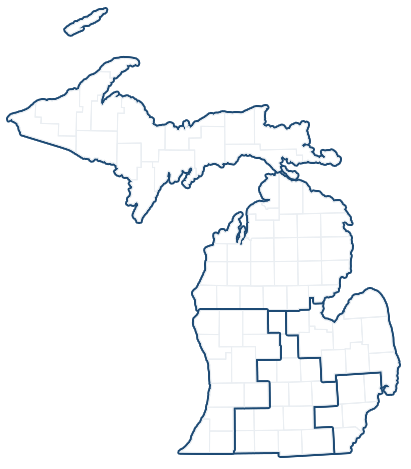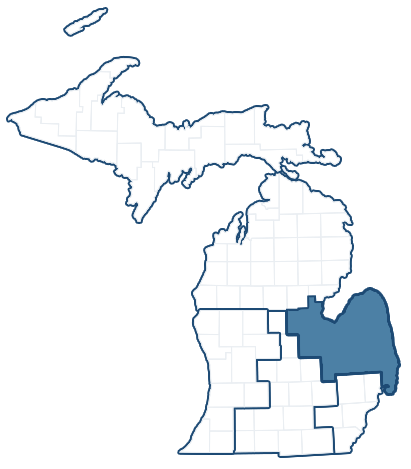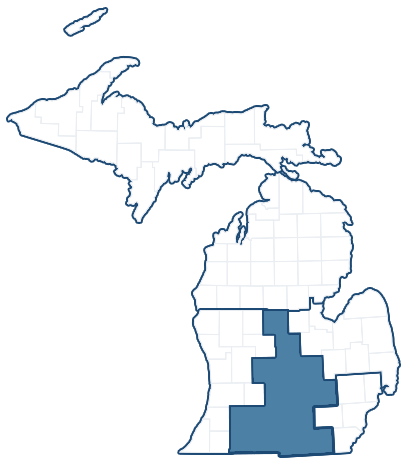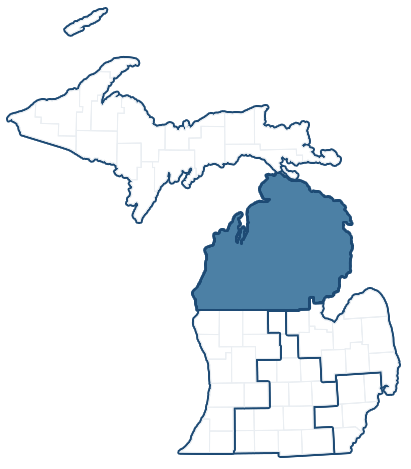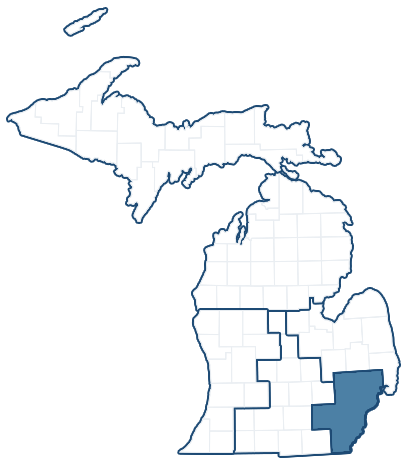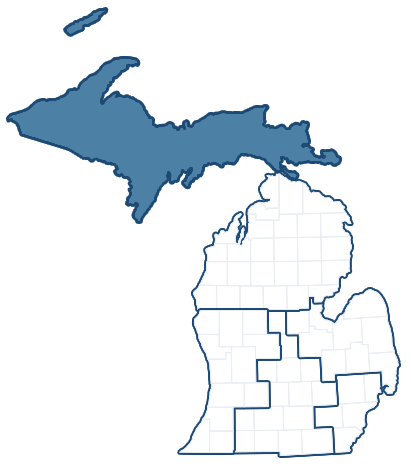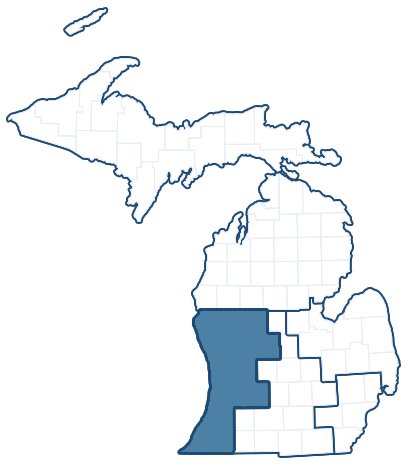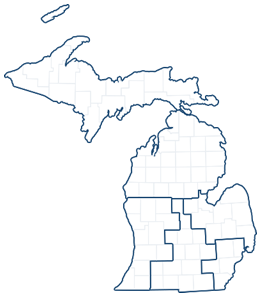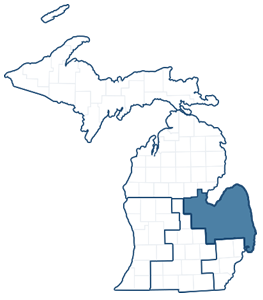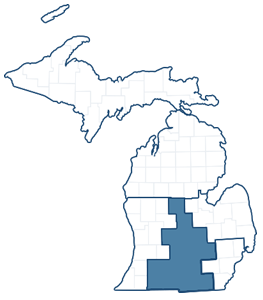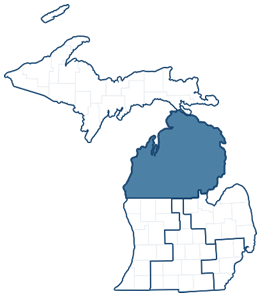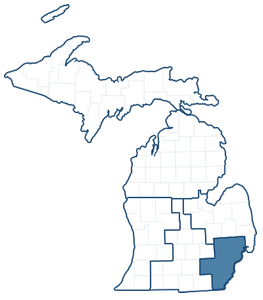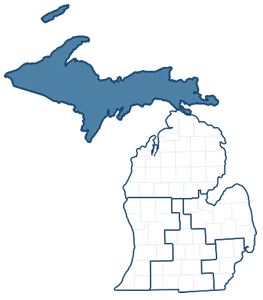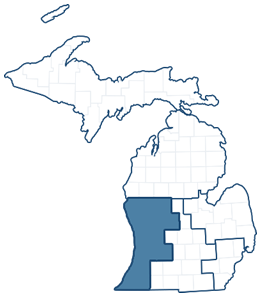Stabenow, Peters Urge NASA’s Continued Support of Harmful Algal Bloom Monitoring
Monday, October 05, 2015With a growing threat of harmful algal blooms, U.S. Senators Debbie Stabenow and Gary Peters today sent a letter urging the National Aeronautics and Space Administration (NASA) Administrator Charles F. Bolden to continue support of the Harmful Algal Bloom (HAB) remote-sensing project. HABs have posed a threat to the Great Lakes, including recently in water crises in Monroe County, Michigan and Toledo, OH. Peters and Stabenow joined Senators Sherrod Brown and Rob Portman of Ohio to send the letter.
"Last summer, residents of Toledo, Ohio; Monroe County, Michigan; and other nearby communities were unable to drink the tap water in their homes as it had become unsafe due to a large HAB in Western Lake Erie," wrote the Senators in their letter. "The health and safety concerns posed by HABs not only put our communities at risk, but also affect local businesses. The EPA estimates harmful algal blooms cost $64 million per year due to additional drinking water treatment, loss of recreational water usage, and a decline in waterfront real estate values. NASA's remote-sensing program, in collaboration with NOAA and the U.S. Naval Research Lab, serves an integral role in the efforts to provide early warning of HABs."
The Senators asked NASA to ensure that the President's fiscal year 2017 budget maintains current funding levels for the HAB remote-sensing project, and to detail its plan for working with the National Oceanic and Atmospheric Administration (NOAA), the Navy Research Lab, U.S. Department of Agriculture, the Environmental Protection Agency, and state and local government and non-governmental organization to monitor HABs on the Western Lake Erie Basin.
Lake Erie is the water source for the South County Water District, which provides drinking water in southern Monroe County, Michigan. In August 2014, nearly 30,000 customers in Monroe County were affected by a water use ban due to contamination from toxins produced by algae blooms in Lake Erie.
Full text of the letter is below and available here.
Charles F. Bolden, Administrator
National Aeronautics and Space Administration
300 E. St. SW
Washington, DC
Dear Mr. Bolden:
We are writing to request your continued support of the Harmful Algal Bloom (HAB) NASA's remote-sensing project undertaken by NASA's Applied Sciences Program. As you know, HABs are a phenomenon that have affected coastal and lake communities for decades, and more recently have increased in frequency and magnitude.
Last summer, residents of Toledo, Ohio; Monroe County, Michigan; and other nearby communities were unable to drink the tap water in their homes as it had become unsafe due to a large HAB in Western Lake Erie. The health and safety concerns posed by HABs not only put our communities at risk, but also affect local businesses. The EPA estimates harmful algal blooms cost $64 million per year due to additional drinking water treatment, loss of recreational water usage, and a decline in waterfront real estate values.
NASA's remote-sensing program, in collaboration with NOAA and the U.S. Naval Research Lab, serves an integral role in the efforts to provide early warning of HABs. Deploying a hyperspectral imager and miniature spectrometers aboard Glenn's aircraft allows for the collection of up to 50 gigabytes of data per flight -- data that can be processed and analyzed in as few as 4 hours. In contrast, satellite imaging of the blooms can take up to two weeks to be processed, as imaging only occurs when the satellite passes over Lake Erie on a pre-planned orbital route. In water quality emergencies, responsive monitoring of microcystin and other cyanobacteria levels is essential to public health and economic sustainability of coastal Lake Erie cities.
While the frequency of satellite images cannot be increased, the frequency of aircraft monitoring can be adjusted to respond to crises. During the Toledo water crisis, flight frequency was increased from 4 to 14 flights per week. In collaboration with the Ohio EPA, NASA was able to foresee a HAB near Kelleys Island, and adjust water treatment in order to maintain safe conditions. NASA has also initiated outreach efforts by running a workshop with plants in Northeast Ohio to inform water treatment professionals about NASA's monitoring capabilities.
The remote-sensing capabilities of the hyperspectral imager have applications in many other areas, including defense, precision agriculture, and monitoring the clean-up of oil spills and health of forests. NASA is still learning more about the hyperspectral imaging system and continues to refine its sensitivity to HABs at low concentrations, develop additional sensing technologies, and apply the aircraft-based refined sensing technologies for satellite use.
Given these efforts we would request the following:
1) That as NASA works on the president's fiscal year (FY) 2017 budget that it include funding for HAB-remote sensing in the Western Lake Erie basin at the current FY 2016 level,
2) That NASA detail for us the steps it has taken and intends to take to continue coordinating with its federal counterparts - including NOAA, the Navy Research Lab, USDA, and the EPA - in monitoring HABs on the Western Lake Erie Basin, and
3) That NASA detail the steps it has taken and intends to take to coordinate with state and local government and non-governmental organizations in monitoring HABs on the Western Lake Erie Basin.
Algal blooms threaten the Lake Erie watershed annually, and require consistent monitoring in order to ensure safe drinking water for the residents of Ohio and Michigan. More research on the hyperspectral imaging system will both advance the technology and allow scientists learn more about HABs in the Western Lake Erie Basin. Thank you for your consideration. Please do not hesitate to contact us if you have any questions
Sincerely,
U.S. Sen. Debbie Stabenow
U.S. Sen. Sherrod Brown
U.S. Sen. Gary C. Peters
U.S. Sen. Rob Portman
Next Article Previous Article



